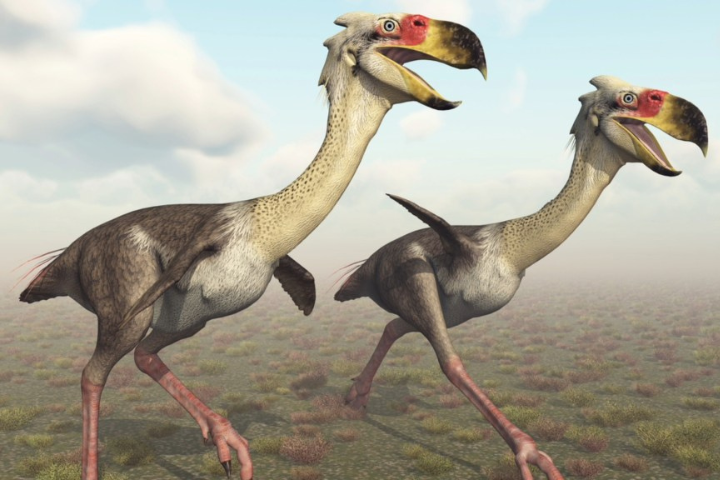Scientists have made a groundbreaking discovery in South America’s Tatacoa Desert, uncovering fossilized remains of a giant “terror bird” from the Phorusrhacid family.
These formidable predators, which roamed the Earth between 60 million and 2 million years ago, were among the most powerful carnivores of their time. Known for their immense size—some reaching up to 10 feet tall—and their lethal beaks, terror birds were dominant hunters in ancient South America, capable of sprinting at high speeds to chase down prey.
The recent discovery, which includes a leg bone dating back to the Miocene epoch, offers new insights into these flightless birds and their role in the ecosystem following the extinction of dinosaurs.
New Giant “Terror Bird” Discovery in South America
A newfound fossil find in South America’s Tatacoa Desert is reigniting interest in the Phorusrhacid family – flightless, meat-eating birds that formed part of the planet’s most fearful predators.
The terror birds roamed South America from 60 million to 2 million years ago, and it grew to become 10 feet tall. Being a good hunter is due to its massive hooked beaks and powerful legs since they can sprint at top speed to catch its prey.
Associate Professor at the Johns Hopkins University School of Medicine, Dr. Siobhan Cooke said, “The size of the leg bone suggested that this terror bird may be the largest known ancient bird among its species,” meaning that this particular bird would be 5 to 20 percent larger than other Phorusrhacids. The fossils thus show an interesting view of that time when these birds ruled the world, capturing small and mid-sized animals with their deadly beaks.
Clues from the Leg Bone and Prehistoric Caiman
The leg bone-the 12 million-year-old Miocene-era clue to the terror bird’s life and eventual death-is coming together impressively. Indentations and tooth marks correspond with characteristics of Phorusrhacids, and they have been determined to belong to a prehistoric caiman called Purussaurus. These scientists theorize that the ultimate killer may have been injuries caused by a very large crocodilian predator.
According to Dr. Cooke, “Given the size of crocodilians 12 million years ago, we suspect the terror bird would have died as a consequence of its injuries.” This evidence characterizes a very dramatic ending of a bird that ruled for millions of years in South America. Further, the South American bird today-the seriema-is considered to be a distant cousin of the Phorusrhacids, thus shedding more light on the evolutionary lineage of these extraordinary birds.




GIPHY App Key not set. Please check settings